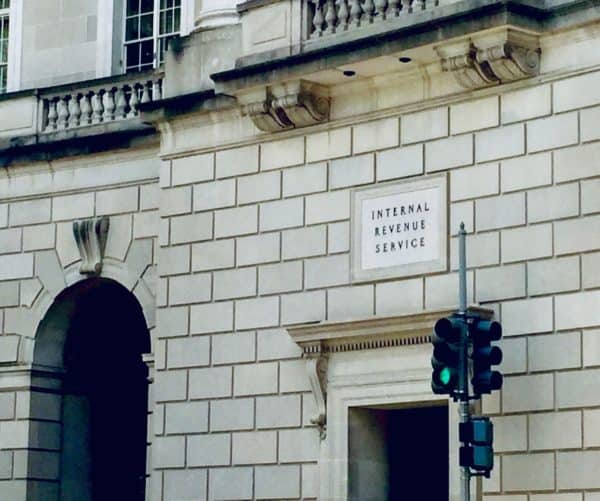Let me start with a confession: I’m not smart enough to be a tax attorney, least of all a US tax attorney. The intricacies of US tax law defy my brain’s attempts to systematize a coherent taxonomy. The tax code is too complex and diverse for me, although I’ve spent nearly 30 years of my career untangling the complicated rules of federal securities laws and financial services regulations. And in addition to the rules themselves, there are interpretations and traditions that exacerbate the difficulty.
Fortunately there are people like Abe Sutherland, the author of numerous articles on a very specific area of US tax law: the handling of rewards for cryptocurrencies created on public, permissionless blockchain platforms that use a consensus mechanism for proof of stake (described in more detail below). Finally he made one primer when asked to introduce more people to proper analysis.
Abe thinks this problem is simple, as the staking-created cryptocurrency tokens, which he calls “reward tokens,” are new property that deserves the same treatment as plants grown from seeds, farm-born cattle, newly mined precious metals, novels or songs come from newly written, newly produced articles and the idea for a new financial instrument. As the primer notes:
“New property. . . is never an immediate income for its first owner. “ Rather, “[n]New homes generate taxable income when they are sold, not when they are created. “
I quickly understood this concept because it made sense to understand how proof of stake consensus works on these blockchain platforms. As an alternative to the proof of working consensus used in the original Bitcoin blockchain, proof of commitment is the means by which the system and some of its participants agree on updates to the blockchain. In other words, this is how the database is updated with new information.
 In essence, proof of use requires that numerous token holders “lock” the native system tokens they hold in the platform so that they can alternately add the data blocks that make up the blockchain and update their database. The tokens are “locked” by placing them in the platform’s staking application (part of its programming), which freezes the tokens so they cannot be transferred until they have been removed from the application. The blocked tokens form the “stake” of the token holder, which the stake application evaluates according to its programming in order to determine when it is the turn of the particular token holder to validate a block (ie add the information to the blockchain database).
In essence, proof of use requires that numerous token holders “lock” the native system tokens they hold in the platform so that they can alternately add the data blocks that make up the blockchain and update their database. The tokens are “locked” by placing them in the platform’s staking application (part of its programming), which freezes the tokens so they cannot be transferred until they have been removed from the application. The blocked tokens form the “stake” of the token holder, which the stake application evaluates according to its programming in order to determine when it is the turn of the particular token holder to validate a block (ie add the information to the blockchain database).
The exact method for selecting the alternation in the validation is not important for the tax analysis, since for the new real estate tax analysis it must be true that the act of the validator to form the newest block simultaneously creates one or more new native system tokens. These new tokens will indicate to everyone that the block has been added to the blockchain and will provide token holders with incentives to perform the important activities of staking out tokens and building blocks to secure the network. This security is achieved by adding new blocks, which make the chain too long for an attacker to duplicate it with false or manipulated data. If many token holders are deployed, it also leads to the distribution and decentralization of the network, which is necessary for security and immutability. The work of the stakers is critical to the survival and integrity of the platform, which is why the formation of a new block leads to the creation of new native system tokens.
In addition to the intuitive analysis of “new real estate”, Abes Primer discusses several other reasons for taxing operational bonuses on sale rather than on acquisition.
“Simplify,… [t]The practical problems concern the administration of income tax and the cost of compliance [and t]The economic problem arises from the overvaluation of profit – and the resulting overuse. . .. ”
 The primer then explains the practical problems by detailing how difficult or impossible it would be to know when a reward marker was created by a staker in order to determine when it would need to be assessed under a treated tax system as compensation . Even without the timing question, there are questions about which data source (s) would determine the value. The primer provides examples of these points using the Tezos, Cosmos, and Ethereum 2.0 blockchains. Both problems are solved by taxing reward tokens at the time of sale, when both the timing and valuation are easy to determine.
The primer then explains the practical problems by detailing how difficult or impossible it would be to know when a reward marker was created by a staker in order to determine when it would need to be assessed under a treated tax system as compensation . Even without the timing question, there are questions about which data source (s) would determine the value. The primer provides examples of these points using the Tezos, Cosmos, and Ethereum 2.0 blockchains. Both problems are solved by taxing reward tokens at the time of sale, when both the timing and valuation are easy to determine.
The economic problem of overvaluing economic profit arises from the fact that reward tokens do not represent a reasonable increase in the staker’s percentage of all tokens outstanding. Reward tokens increase the total number of tokens and are usually distributed proportionally to all stakers. They are therefore not synonymous with an overly large advantage for the staker who has created a certain reward, as one would expect from a “compensation”. As such, the economic benefit to the creative staker is not a payment or income, but only a proportion of overall systemic inflation.
With the analytical framework, practicalities, and economic realities to support his conclusion, Abe continues his quest to ensure that everyone understands these issues and sees the proper tax treatment. With his pleasant demeanor, simple explanation, and persistent determination, the Proof of the Stake Alliance (“POSA”) who sponsors its work has an effective attorney.
Abe definitely took this scared taxpayer and made me understand. Perhaps 2021 will be the year the tax authorities approve it.
Disclosure: POSA is the leading political and advocacy organization for evidence of blockchain networks. I’ve been a member of the POSA board of directors since January 1, 2021, but Abe and I have been discussing his analysis for much of 2020.
 Lee A. Schneider is General Counsel at Block.one, one of the world’s largest blockchain companies and creators of the EOSIO blockchain protocol. In this role, Schneider is responsible for various aspects of the company’s legal function as well as the company’s government initiatives. He joined Block.one after leading blockchain, fintech and broker-dealer practices at two large international firms. Lee has been recognized as one of the leading voices on blockchain-related regulation and compliance and has played a role in structuring several of the largest and most successful blockchain-related projects. Schneider is co-organizer of Appetite for disorder Podcast with Troy Paredes and is the contributing editor of Chambers and Partners’ Fintech Practice Guide. He is the contributing editor of the Chambers and Partners 2019 Fintech Practice Guide. All views expressed are in his personal property and reflect only his personal views and not those of Troy, Chambers or block.one or its directors, officers or employees. His views do not constitute legal, investment or other advice.
Lee A. Schneider is General Counsel at Block.one, one of the world’s largest blockchain companies and creators of the EOSIO blockchain protocol. In this role, Schneider is responsible for various aspects of the company’s legal function as well as the company’s government initiatives. He joined Block.one after leading blockchain, fintech and broker-dealer practices at two large international firms. Lee has been recognized as one of the leading voices on blockchain-related regulation and compliance and has played a role in structuring several of the largest and most successful blockchain-related projects. Schneider is co-organizer of Appetite for disorder Podcast with Troy Paredes and is the contributing editor of Chambers and Partners’ Fintech Practice Guide. He is the contributing editor of the Chambers and Partners 2019 Fintech Practice Guide. All views expressed are in his personal property and reflect only his personal views and not those of Troy, Chambers or block.one or its directors, officers or employees. His views do not constitute legal, investment or other advice.